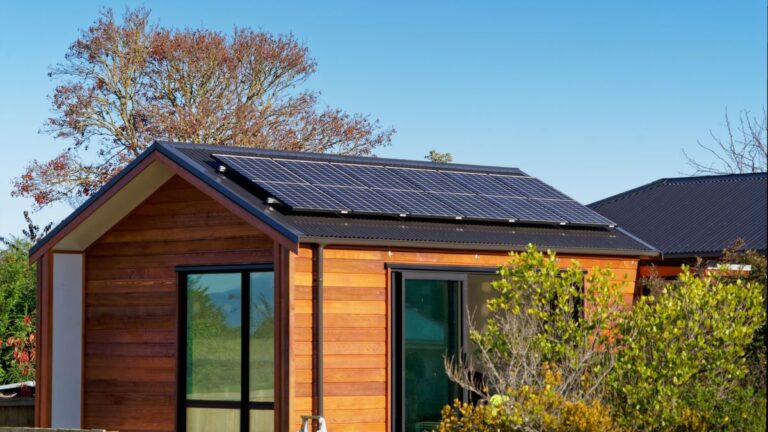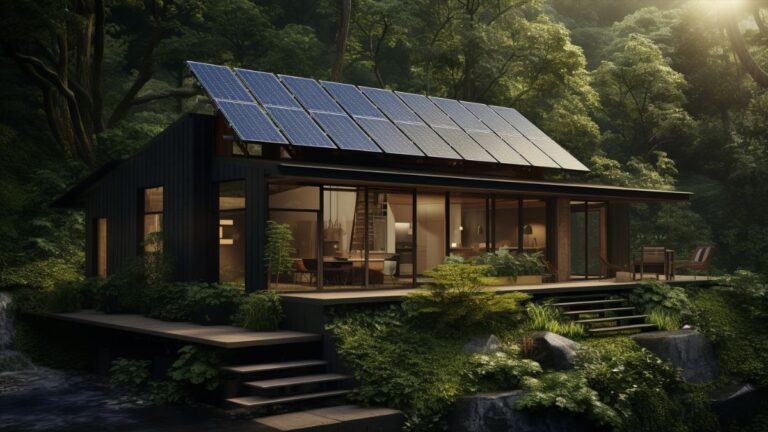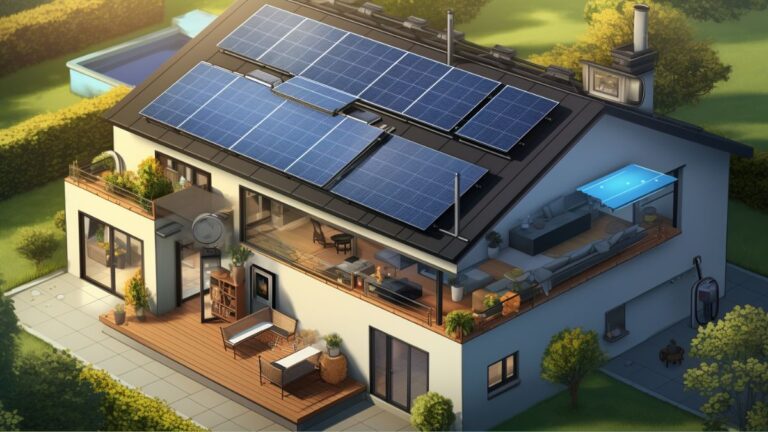Step-by-Step Guide: Setting Up Off-Grid Solar Power
So you’re interested in setting up your own off-grid solar power system? Well, there’s something you may not know – it’s actually easier than you might think.
By following a step-by-step guide, you’ll be able to harness the power of the sun and generate your own electricity. From understanding the components of the system to selecting the right battery, solar panels, and charge controller, each step plays a crucial role in creating an efficient and sustainable off-grid power setup.
But how exactly do you go about it? Stick around, because we’re about to reveal the key steps to get you started on your off-grid solar adventure.
Key Takeaways
- Understanding the components and principles of off-grid solar power systems is essential for designing and planning an efficient system.
- Proper battery selection and sizing are crucial factors that should be considered based on energy consumption, daily usage, climate, and discharge levels.
- Solar panel selection and sizing require calculating daily energy consumption, peak sun hours, and using the appropriate formula to determine the required wattage.
- The choice of charge controller and inverter should be based on factors such as battery bank voltage, solar panel array size, power requirements of appliances, and compatibility with the overall system.
System Design and Planning
To effectively design and plan an off-grid solar power system, you must have a thorough understanding of its components and basic electricity principles.
The key components of an off-grid solar power system include solar panels, batteries, charge controllers, and inverters. Solar panels convert sunlight into electrical energy, which is then stored in batteries for later use.
The size and number of solar panels needed depend on the daily energy consumption, peak sun hours, and geographical location. Similarly, the batteries must be selected and sized based on energy consumption and storage capacity requirements.
The charge controller regulates the flow of energy from the solar panels to the batteries, while the inverter converts the stored DC energy into AC power for use in your off-grid system.
It’s essential to carefully calculate your energy needs, determine the system voltage, and select the right equipment to ensure the efficient functioning of your off-grid solar power system.
Battery Selection and Sizing
Having a thorough understanding of the key components and principles of off-grid solar power systems, you can now move on to the critical task of selecting and sizing the batteries for your system.
Battery selection and sizing are crucial for storing the energy generated by your solar panels. When choosing a battery, consider factors such as energy consumption, daily usage, climate, and discharge levels.
There are different types of batteries available, including lead-acid, lithium-ion, and NiCd. Lead-acid batteries are cost-effective but require maintenance, while lithium-ion batteries offer longer lifespan and higher efficiency. Properly sizing the battery bank is essential for optimal system performance.
To help you with the selection process, refer to the table below for important battery specifications such as voltage rating, current rating, and power rating.
| Specifications | Description |
|---|---|
| Voltage Rating | The maximum voltage the battery can provide. |
| Current Rating | The maximum current the battery can deliver. |
| Energy Consumption | The amount of energy your system consumes daily. |
| Power Rating | The maximum power your system requires. |
Solar Panel Selection and Sizing
When selecting and sizing solar panels for your off-grid system, it’s crucial to consider factors such as daily energy consumption, number of peak sun hours, and solar panel efficiency.
Start by calculating your daily energy consumption in watt-hours (WH). This can be determined by analyzing the energy requirements of your DC appliances and DC loads.
Next, determine the number of peak sun hours in your geographical location, considering variations due to time of day and season.
Solar panel wattage can then be calculated using the formula: Solar Panel Watt = Daily energy consumption (WH) / (Peak Sun Hour x system efficiency).
It’s important to note that solar panels come in different wattages and sizes. Additionally, consider the system voltage, as it affects the number of panels needed and the system wiring.
To maximize energy capture, an MPPT charge controller can be used to optimize the solar panel voltage.
Charge Controller Selection and Sizing
What factors should you consider when selecting and sizing a charge controller for your off-grid solar power system?
When choosing a charge controller, it’s essential to consider the size of your solar panel array and battery bank. The charge controller size should match the voltage of your battery bank and be able to handle the current output of your solar panels.
There are different types of charge controllers, such as PWM and MPPT, each with its advantages. MPPT charge controllers are more efficient and can convert higher voltage solar panel outputs to match the battery bank voltage.
Additionally, the charge controller plays a crucial role in regulating and protecting the battery bank. It’s essential to select a charge controller that can handle the power demands of your DC and AC appliances.
Make sure to consider the inverter size and battery voltage when choosing a solar charge controller for your DIY solar system.
Inverter Selection and Sizing
To select and size the appropriate inverter for your off-grid solar power system, you need to consider the power requirements of your appliances and ensure compatibility with your battery bank and solar panel system.
When choosing an inverter, it is important to consider both the continuous power rating and the surge power requirements of your appliances. To help you make an informed decision, refer to the table below for a comparison of different types of inverters.
| Inverter Type | Waveform Output | Suitable Appliances |
|---|---|---|
| Square Wave | Not recommended | Basic electrical devices |
| Modified Sine Wave | Modified sine wave | Most household appliances, except sensitive equipment |
| Pure Sine Wave | Pure sine wave | All appliances, including sensitive equipment |
Remember to select an inverter with a power rating compatible with your battery bank and solar panel system. Additionally, consider the efficiency and safety features of the inverter to ensure optimal performance and protection.
Frequently Asked Questions
How Do You Set up an Off-Grid Solar System?
To set up an off-grid solar system, start by choosing the right solar panels and sizing the battery bank. Select the right charge controller, design the system, install the panels, connect the battery bank, wire the inverter, test the system, and follow maintenance tips.
How Many Solar Panels Does It Take to Run a House off the Grid?
To run your house off the grid, calculate your energy needs, choose efficient solar panels, store energy with the right batteries, use a slightly higher power rating inverter, ensure safe wiring, consider a backup generator, optimize appliance usage, maintain the system, and explore financing options.
How Do I Set off the Grid?
To set up off-grid power, you need to know the benefits, essential components, and how to calculate your energy needs. Choose the right solar panels and batteries for storage. Understand the cost effectiveness, challenges, and maintenance. Learn from real-life success stories of sustainable living.
How Do You Size Solar Panels for off the Grid?
To size solar panels for off-grid systems, consider your energy needs, peak sun hours, and panel efficiency. Use the formula: Solar Panel Watt = Daily energy consumption / (Peak Sun Hour x system efficiency).
Conclusion
In conclusion, by carefully designing and planning your off-grid solar power system, selecting the right components, and properly sizing them, you can create a reliable and efficient source of electricity.
The battery, solar panel, charge controller, and inverter must all be chosen based on your specific needs and requirements.
With proper installation and maintenance, your off-grid solar power system will provide you with clean and sustainable energy, allowing you to live comfortably and independently.





